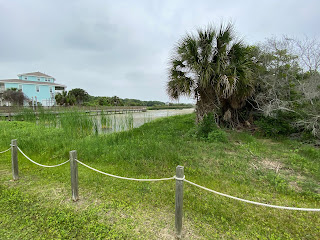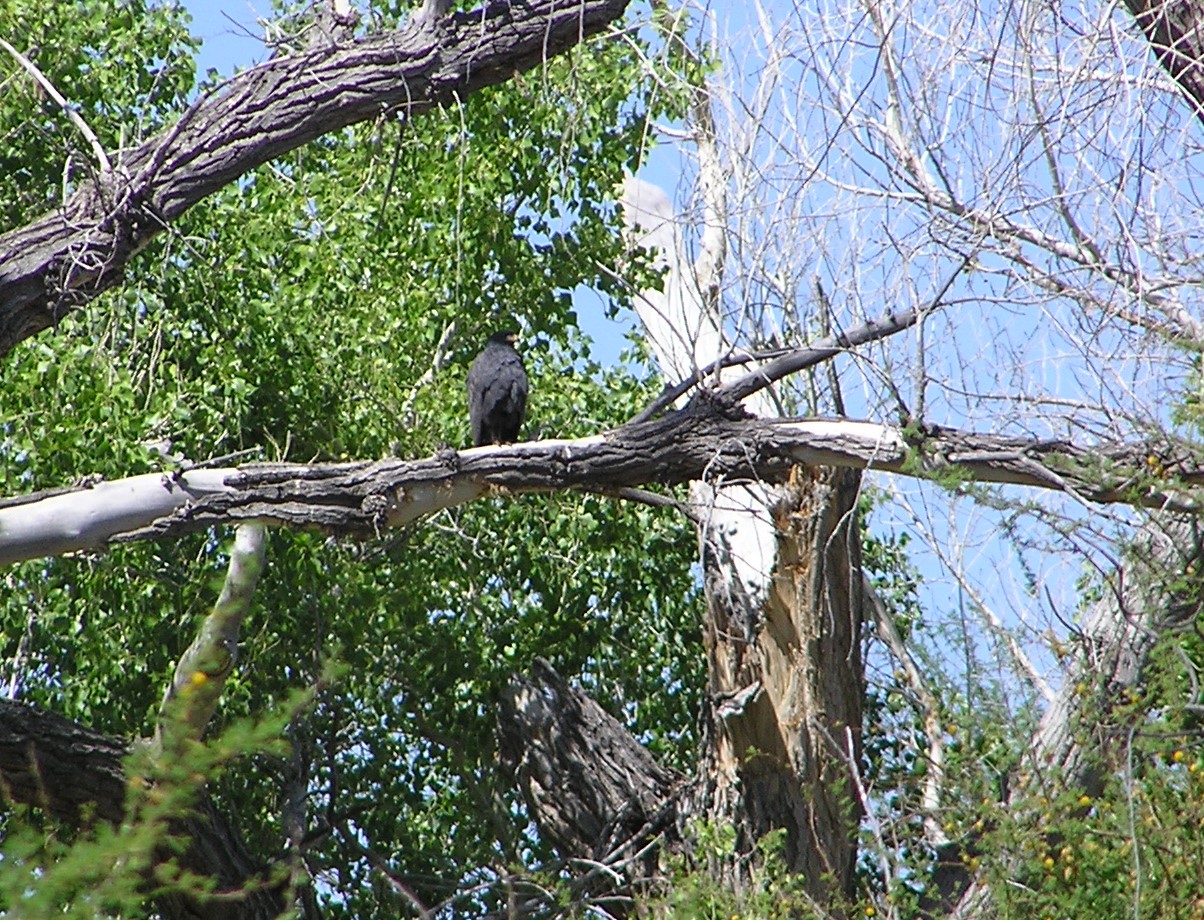Of all the places we visited, Galveston was our favorite. The climate was perfectly tempered by the Gulf of Mexico and the birding was productive. We spent a day on the sand, just decompressing and watching birds though the scope. Here are Sanderling at the surf's edge.
Friday, December 27, 2024
Birding Galveston and Laffite's Cove Nature Society Preserve
Birding Anhuac National Wildlife Refuge
Our final destination in Texas for birding was Galveston. The place perhaps should have been named for the Laughing Gulls, which live there in droves.
High Island is uniquely renowned for its spring migrants, and we hoped to experience that. As luck would have it, High Island was bereft of birds on the day we opted to visit, but replete with mosquitos.

We knew full well that if the winds were stormy and from the north, one could see the "fallout" of flocks of migrants ... and that if the day was clear, one might as well have a fallback plan. Which we did. After experiencing High Island, we drove on to the Anhuac National Wildlife Refuge, and that did not disappoint.
We took the free ferry across the channel, and that gave us some nice views of the Royal Tern.
High Island was beautiful, and had many nice trails and water features.
The birds of Anhuac were unusually social, even the American Bittern seemed unconcerned by human activity.
On the way home we got a surprise view of the Crested Caracara ... which we had hoped for, because we wanted a nice photo. Two were atop a pole by the side of the road, mating. By the time we turned the car around and returned, the deed had been done, but there were still two in close proximity.
Birding the Santa Ana National Wildlife Refuge
After the solar eclipse, we drove to the southern tip of Texas, to the Santa Ana National Wildlife Refuge. There are many birding hotspots in that general area, as well as the World Butterfly Center. Collectively, the area is known as the Lower Rio Grande Valley (LRGV).
In addition to miles of trails through different habitats, there are some very cool hawk watch towers and this bridge at the canopy level.
There are wetlands with various depths of water, and a feeder area that is outside the visitor center / gift shop, visible through the plate glass windows. The gift shop sells ice cream, which is nice as Texas gets very hot. Here are some of the birds seen through the windows.
Inca Dove, White-tipped Dove, and White-winged Dove.
Most all the cormorant there are Neotropic Cormorant, and we saw Mottled Duck (and never were clear enough on what distinguished the Mexican Duck). The Mottled Duck photo has other species present as well, as you can see. I expressed to one birder there my disappointment in not seeing the Least Grebe. He replied, "That's 20 of them right there." I have no defense ... it was hot, and I was tired. They were right in front of me.
This Javalina was foraging in the refuge, and we spotted the Great Kiskadee gathering nesting materials.
Tuesday, May 7, 2024
Birding Christmas Mountains Oasis
On our way out of Terlingua, we made a side-trip to the Christmas Mountains Oasis, a wildlife sanctuary where Lucifer Hummingbirds had been recently reported. Upon seeing this photo of a sign on the road to the destination, one of my friends remarked, "I didn't know that birding was an extreme sport." Let me just say, it is.
The road is well-maintained, so a highway vehicle can slowly navigate it, but if you happen to have 4-wheel drive and high clearance, you could relax more during the approach.
Sunday, May 5, 2024
Birding Big Bend National Park
Though the total solar eclipse set the date of our trip to Texas, we had long wanted to go birding there. We allowed time before and after the eclipse to visit some of the better known birding hotspots. We began our trip, before the eclipse, by driving from Austin down to Terlingua, a community adjacent to Big Bend National Park and spent three days birding some popular hotspots in the park: Sam Nail Ranch, Rio Grande Village, Dugout Wells, Cottonwood Campground, and the Chisos Mountains Basin.
We stayed at sleeper cabins that had no potable water, so it was a good thing we had brought our own water. The weather was a big change from Idaho where there was still snow on the hills out our window. Ninety degrees with hot dusty winds gusting to 40 miles per hour was our experience. At night, the turkey vultures flew in to roost on a cell tower near our lodging. At dawn, seen below, they stretch their wings to warm in the morning sun.
Our first stop was at Sam Nail Ranch. Tired from traveling, we were not the early birds, and it was afternoon by the time we walked the trail.
We proceeded on to the Rio Grande Village campground where we were greeted by the begging Greater Roadrunner. They seemed very acclimated to campground life.
A Ladder-backed Woodpecker was foraging the in the trees.
The next morning while we sat outside our cabin, enjoying the cooler morning temperatures and drinking coffee, we observed a Lark Bunting foraging nearby.
Our second trip into the park took us to the Visitor Center, where this Curve-billed Thrasher was seeking shade and very audibly calling.
We proceeded to Cottonwood Campground, where some helpful birders pointed out the Common Black-hawk, behind the sign that said, "No entry, Black-hawk Nesting Area".
There were also numerous Gray Hawk residing there.
And, Vermillion Flycatchers everywhere.
On our third and final day visiting Big Bend, we first went early (relatively speaking, early for us) to the Dugout Wells area, which was rich with birds even at the hour we arrived. Bell's Vireo were prevalent.
We then went to wait in line to be permitted to drive up to the Chisos Basin. The parking is limited there, so when a car came out, another was allowed to drive up. This was confusing to those at the back of the line, as there was only one volunteer at the head of the line and no explanatory signage. I did some volunteer work for a while, going to each new arrival and explaining the options which included driving to the head of the line and making a left turn to drive back down the road if one was not interested in the roughly 20-minute delay.


















































